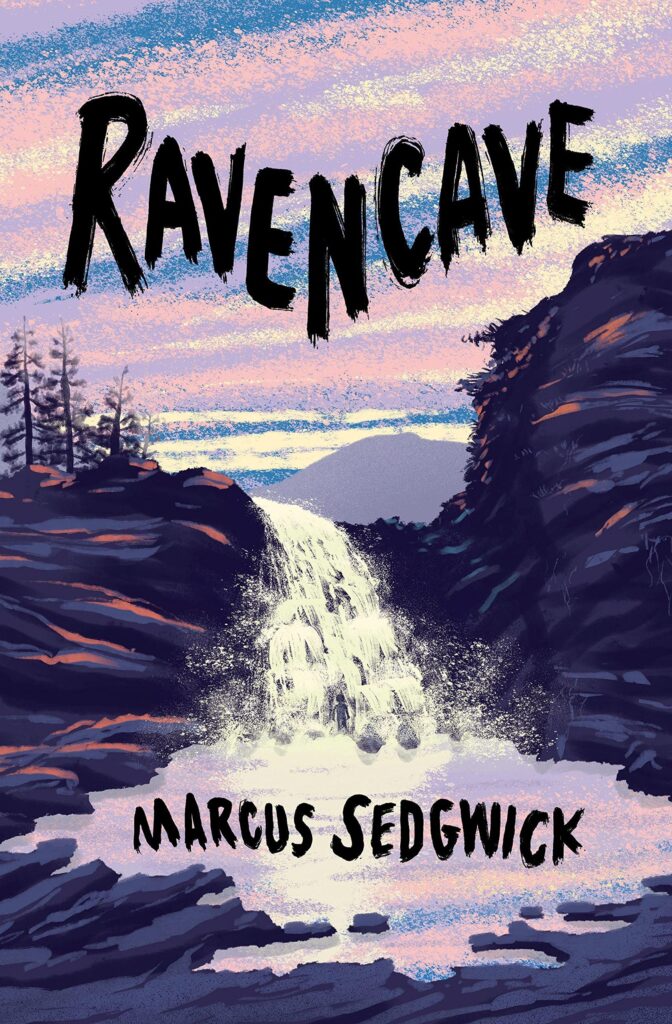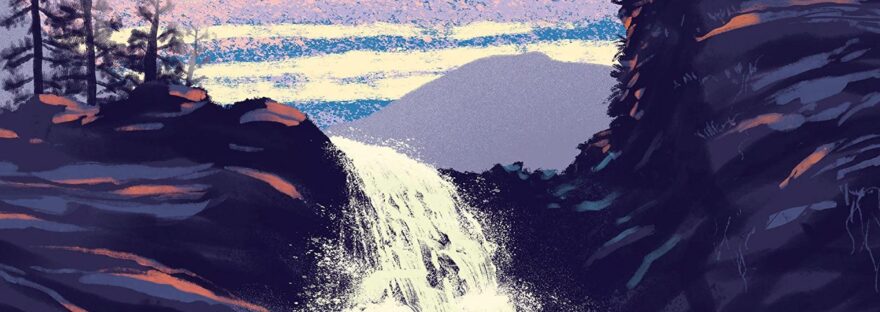By Marcus Sedgwick (published by Barrington Stoke, 2023)
Eight hundred people, eight hundred families, just like ours, without enough money coming in, with no way of knowing how to survive.
I wonder how many of those eight hundred families are dealing with it by going on holiday and wandering over the empty Yorkshire hills, going to spread their granny’s ashes on the landscape.
A landscape full of ghosts, Mum says, though she hasn’t seen one.
And strangely, it turns out it’s not her who sees a ghost first.
It’s me.
James is having a tough time. His father recently lost his job, his mother hasn’t written anything in years, and his brother won’t even talk to him anymore. And now they’re all miserably traipsing across the Yorkshire hills on ‘holiday’, to scatter his granny’s ashes.
It’s on one of these days out that James first sees the ghost girl, though he’s too afraid to follow her. It won’t be the last time she appears however, and frustrated by his family’s inability to communicate, maybe next time he’ll go with her…

I can’t say it doesn’t feel a little odd reviewing this book. Marcus Sedgwick passed away in November of last year, meaning that Ravencave has been published posthumously. Sedgwick was a master of stories about ghosts and the supernatural, as well as death, hardship, and loss, so although the topic of this one is not unusual, it nonetheless feels poignant.
Our protagonist, James, is an eleven-year-old boy on holiday with his family. They’re in Yorkshire, just like they were the year before. But rather than a joyful time, they all seem to drift around each other, not really talking, each bearing the weight of the current hardships.
James feels lost and detached from his family; he’s doing his best to connect, to keep things light, and to be there for everyone else, but it’s only a matter of time until the slow trickle of frustration breaks, like a dam bursting. It’s no wonder he goes chasing after the ghost girl.
His parents, meanwhile, are chasing their own ghosts – for his father, it’s a family tree, an understanding of where he comes from when his future is uncertain. For his mother, it’s her creativity. Even his brother, Robbie, is feeling the strain, moodier than he was when they last visited.
The financial difficulties that the family are facing will be very familiar to many right now. You can feel the visceral emotion from James’ father when he sees the head of his company on TV ‘explaining’ the layoffs, and the sadness in his mother’s voice when she talks about losing her spark for writing. You can feel the tension and the strain in their conversations, but punctuated with moments of tenderness and hope.
Sedgwick’s descriptions are as evocative as always, from the blustering open hills to the dark caves and the vine covered ruins. There is beauty in the emptiness of the landscape, a quietness that builds to melancholy as the story progresses. However, there is also a brightness and warmth towards the end, as the family come together.
It’s worth noting that there is a political message within the story, about history repeating itself and the endless march of progress that leads the rich to get richer while the workers must do whatever they can to survive. Rather than being laboured however, it feels natural within the setting, and is tempered by the theme of family – blood or not – and being there for one another.
Barrington Stoke are known for publishing accessible stories, and Ravencave is no exception. At just over 100 pages long, it’s a quick read that uses a dyslexic-friendly typeface and layout. The writing itself uses relatively simple words and sentence structures that make for a smooth and easy read, despite the darker subject matter. It is listed in their catalogue as having an interest age of 11+ and a reading age of 8+.
Yes, Ravencave is a ghost story, but it’s also more than that. It’s a story of love and loss, both physical and emotional. More than that though, it’s a story of understanding who you are and where you come from, of accepting the things you can’t change, and making peace with your past – and your future.
If you want to follow James and the ghost girl to the Ravencave, you can grab a copy at the link below.
(Disclosure: If you buy books linked to our site, we may earn a commission from Bookshop.org, whose fees support independent bookshops.)
Looking for more books about coping with loss? If so, you can see our previous reviews here.

